Edging. It’s the unsung hero of every great garden. Most folks don’t even think about it—until they see one done right. And then suddenly, it’s all they can think about.
A sharp edge slices clean through the chaos. It tells the lawn where to stop and the flowers where to begin. It’s structure without being stiff. It’s control without being boring.
But here’s the thing—edging ain’t just practical. It’s a design move. Like eyeliner for your backyard. It defines, highlights, and somehow makes everything else pop harder.
Now let’s talk ideas. Not the stuff you’ve seen a million times before. These? They’ve got character. Grit. A little style. Some of them are fancy. Some are cheap as dirt. But all of them? Magic.
1. Wavy Brick Wonderland
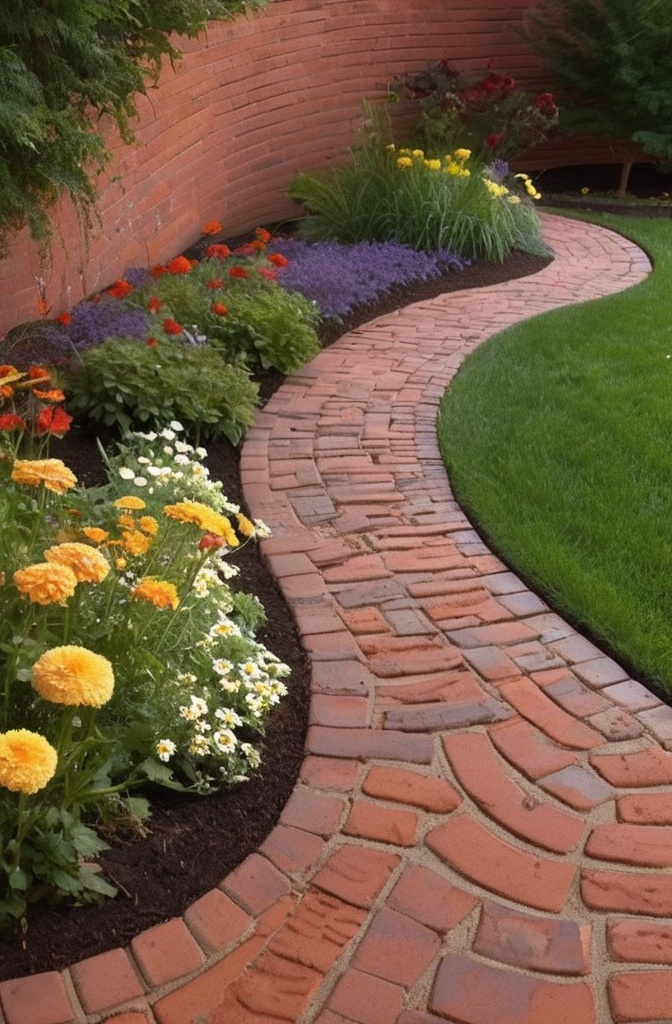
Bricks are old school, yeah, but who said they gotta be straight? Try laying them in a serpentine pattern. Wiggly, weird, and unexpectedly elegant. Especially when moss starts creeping in the cracks. Gives it that “I’ve been here forever” look.
2. Steel That Steals the Show
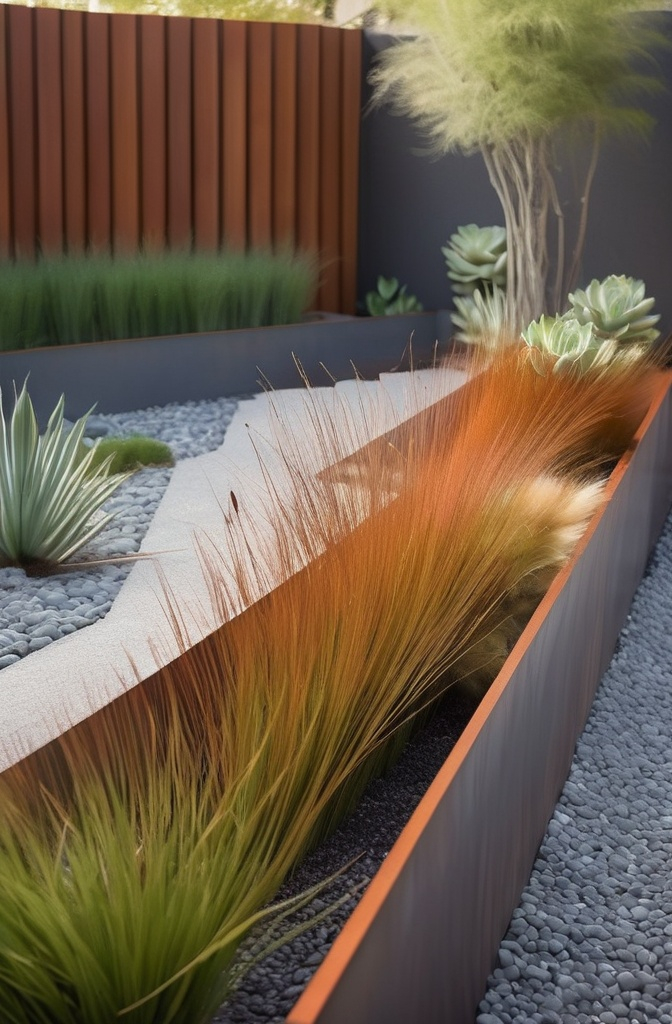
Corten steel is a beast. Rusts beautifully, never rots, and slices through soil like butter. Thin as a whisper, but tough as nails. Makes plants look sharp. Like they’ve been framed in a gallery.
3. Wine Bottle Borderline Crazy
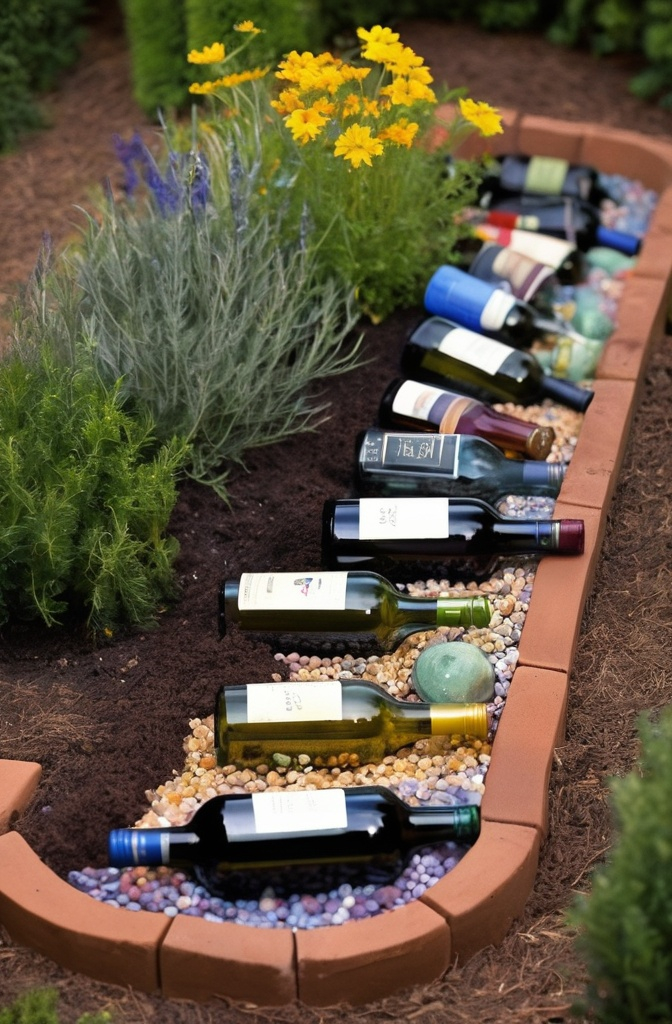
Don’t toss those bottles. Bury them upside-down and boom—you’ve got a glinting, glassy garden edge. Best part? It glows when the sun hits it. Weird? Maybe. But undeniably cool.
4. Living Edge
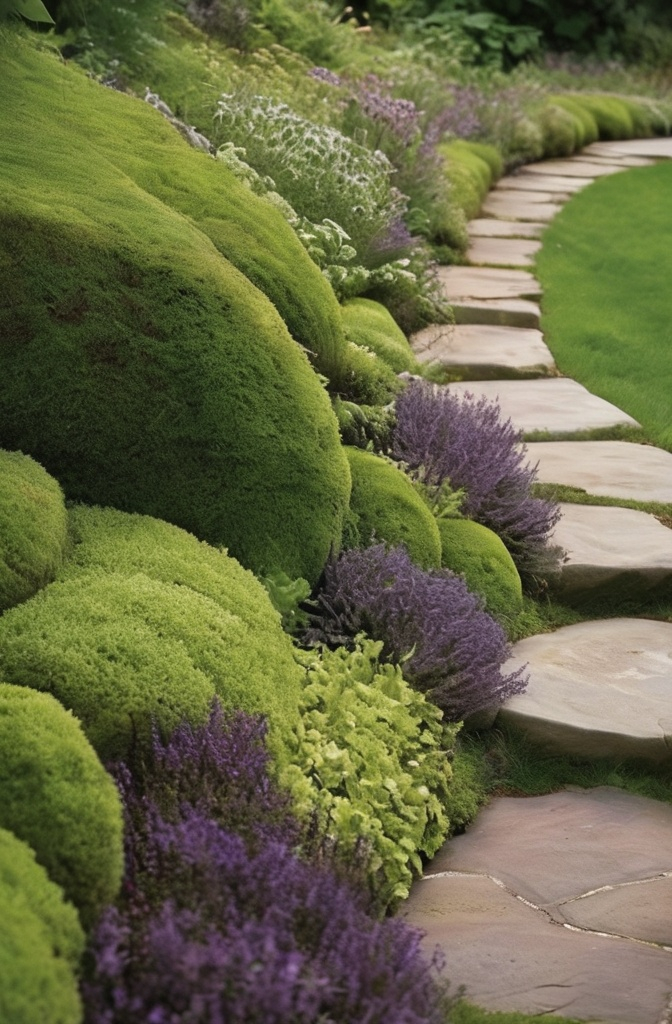
Skip the hard materials entirely. Go green. Literally. Line your garden beds with low-growing herbs like thyme or dwarf mondo grass. They spill and soften, no sharp lines. Just a fuzzy border that hums with life.
5. Stone on Stone on Stone
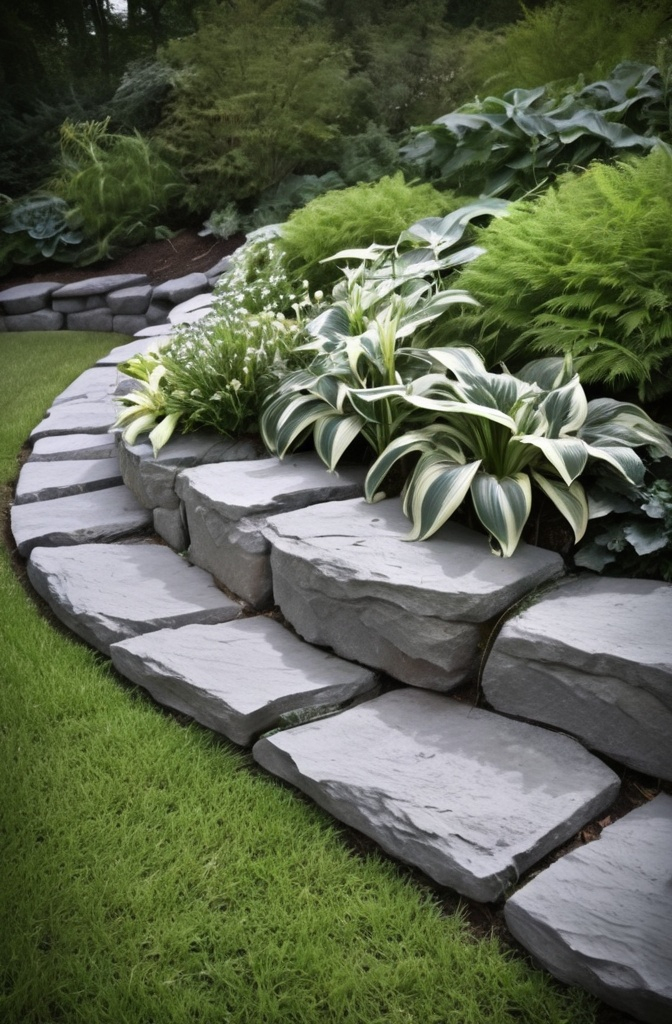
Random flagstones stacked in a low wall. Nothing too neat. Let ’em wobble a little. Nature loves a bit of imperfection. Plus, the bugs’ll thank you.
6. Terracotta Pot Parade
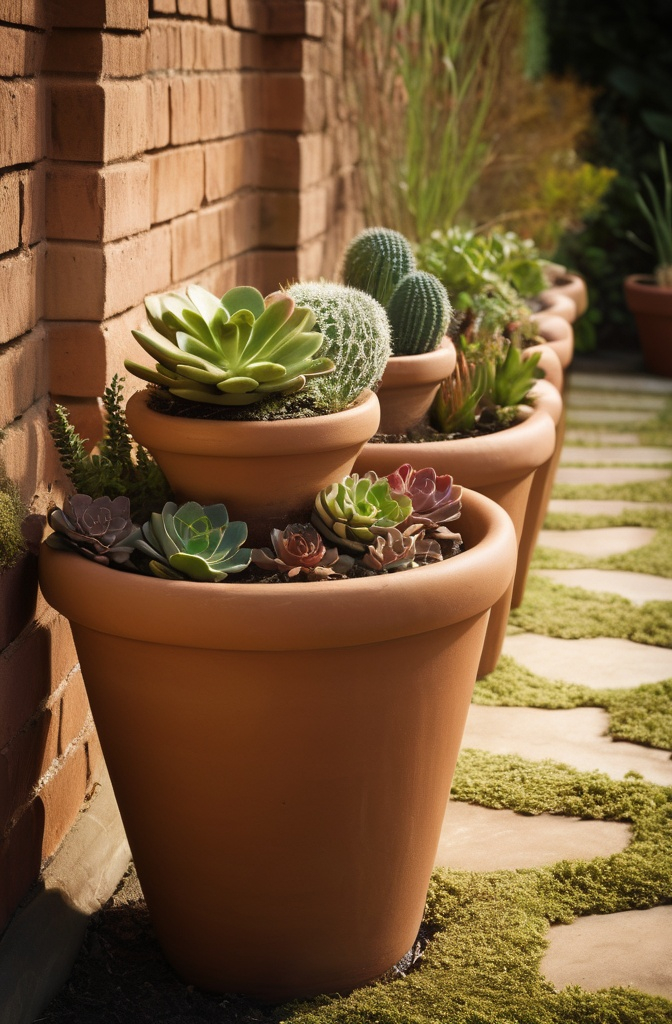
Line your beds with old terracotta pots. Lay them on their sides, mouths open toward the path. Stick succulents inside for bonus charm points. It’s rustic, a bit silly, and totally delightful.
7. Railroad Tie Revival

Okay, this one’s chunky. Heavy-duty wooden ties give serious edge definition. They’re great for slopes. Add a gravel path next to it and you’ve got yourself a mini hiking trail. Just watch for creosote—some of those old ties can get toxic.
8. Recycled Roof Tiles
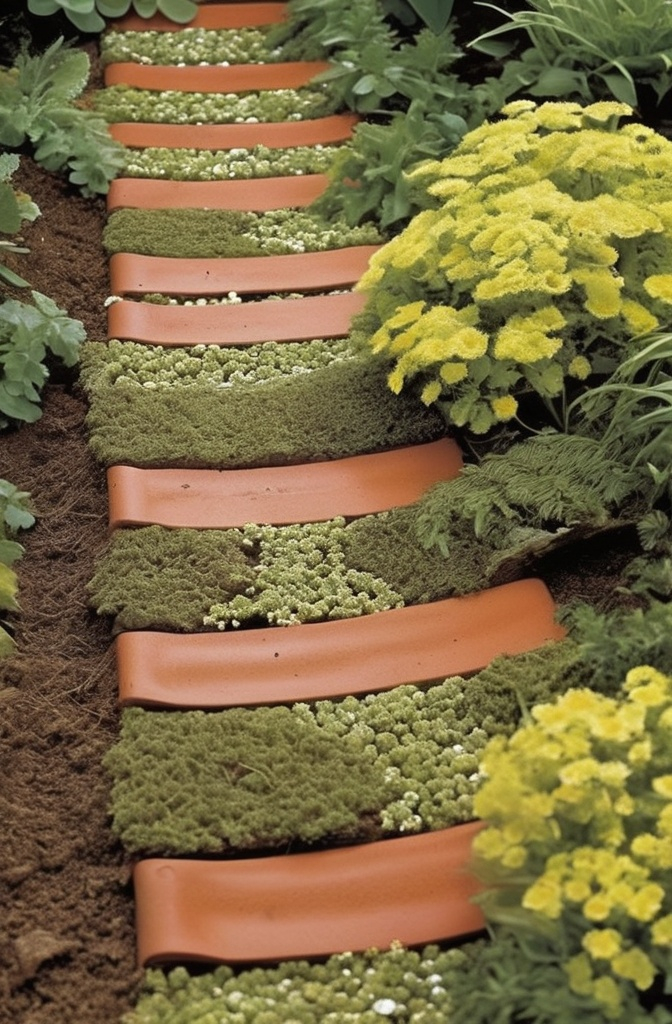
Curve ‘em into the soil, scalloped-side up. Spanish tiles are especially tasty looking. They’re basically waves frozen in clay. Who wouldn’t want waves in their yard?
9. Concrete Castaways

Broken concrete chunks—urbanite, if you wanna get fancy—can be stacked like stone. They look edgy (pun intended) and very post-apocalyptic chic. Especially nice with ornamental grasses.
10. Rope & Peg Rustic
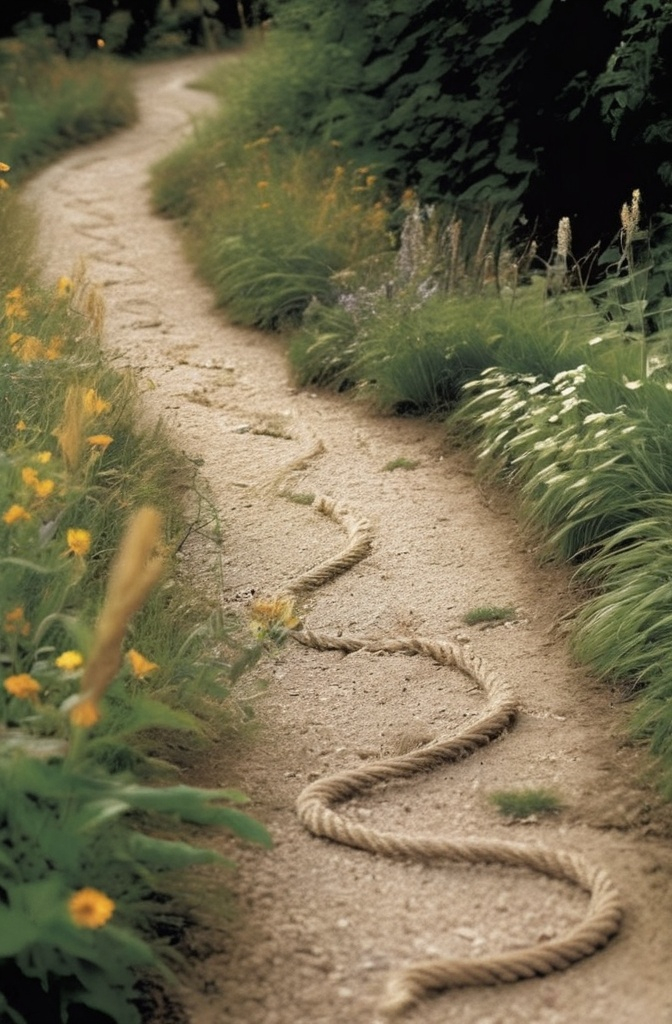
A rope stretched between wooden pegs. So simple it hurts. But dang if it doesn’t look good with wildflowers behind it. Gives off “lazy summer farm” vibes. Add a metal lantern or two and now you’re hosting garden parties.
11. Glow-in-the-Dark Pebble Line

Yes, it exists. Charge them up in the sun, and at night your path glows like alien breadcrumbs. Use them sparingly though—too many and it gets rave-party real fast.
12. Gabion Edges

Wire cages filled with stones. Super architectural. Very “I live in a converted shipping container and make my own kombucha.” Great for modern landscapes. Also doubles as a mini retaining wall.
13. Reclaimed Metal Magic
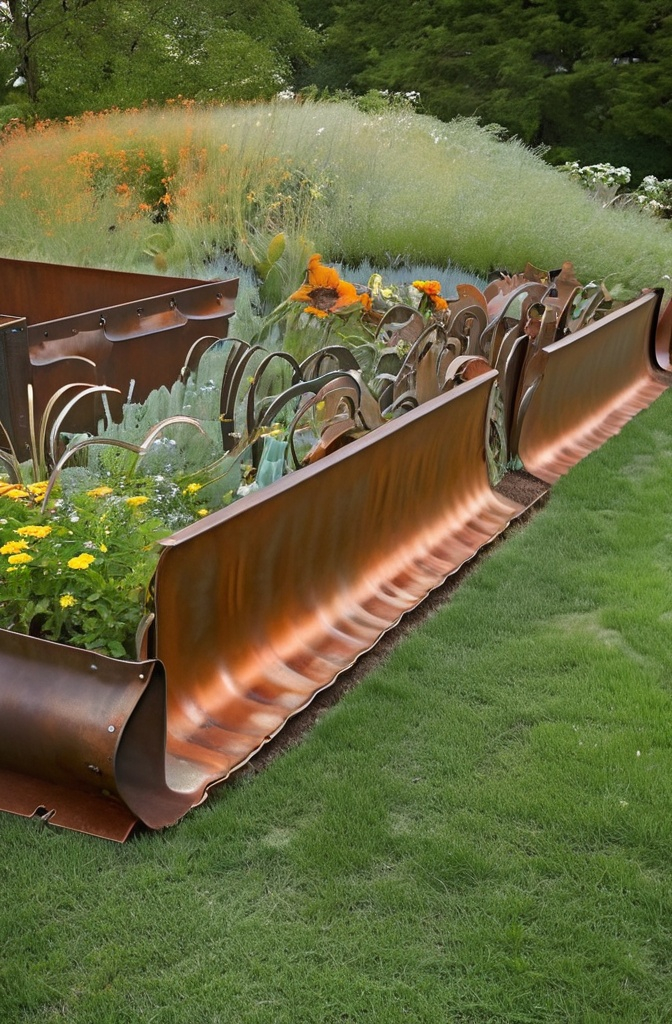
Old license plates. Bits of corrugated tin. Rusty bed frames. Weld them, bend them, make them dance along the edge. It’s trash art, and it’s brilliant.
14. Log Slices
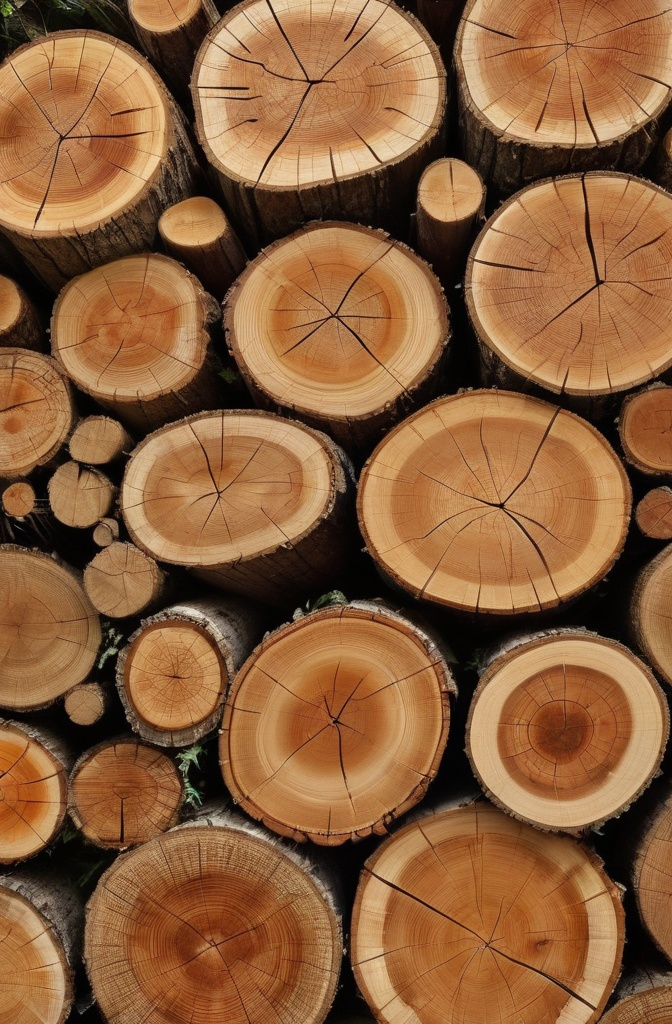
Cut a log into discs and line them up like cookies. Works best with cedar or redwood. They smell good too when it rains. A little whimsical, a little fairy tale.
15. Seashell Edge
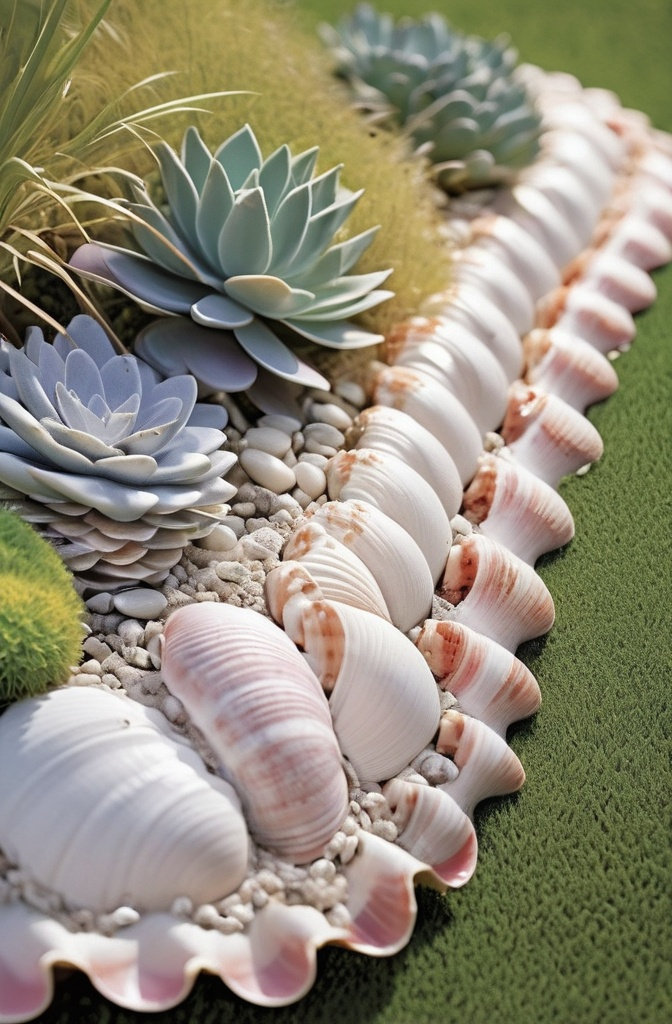
If you live near the coast—or just love the sea—use large conch shells or clam halves. Press them halfway into the dirt, curved side out. They shimmer a bit, like mermaids might pass through later.
16. Edible Borders
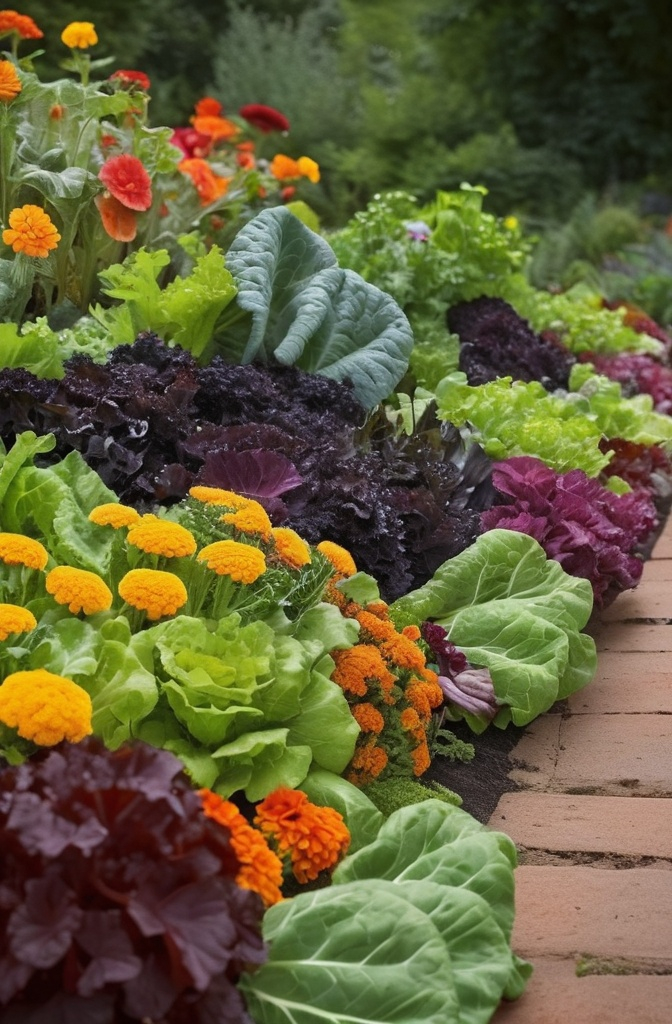
Line beds with kale. Or rainbow chard. Or purple basil. You get beauty and salad. Just make sure nobody tramples your lunch.
17. Painted Rocks by the Kids
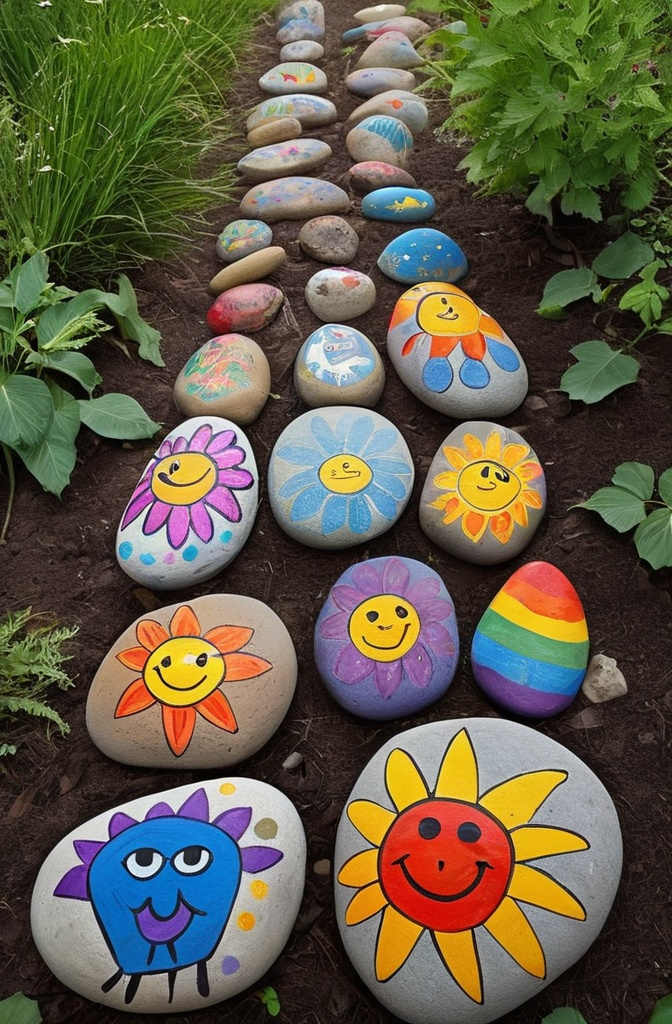
Have your children (or your inner child) paint flat stones with goofy faces, flowers, words like “grow” or “buzz.” Make a line of tiny, cheerful guardians for your flowers. Weird? Sure. But joyful too.
18. Rebar & Twine
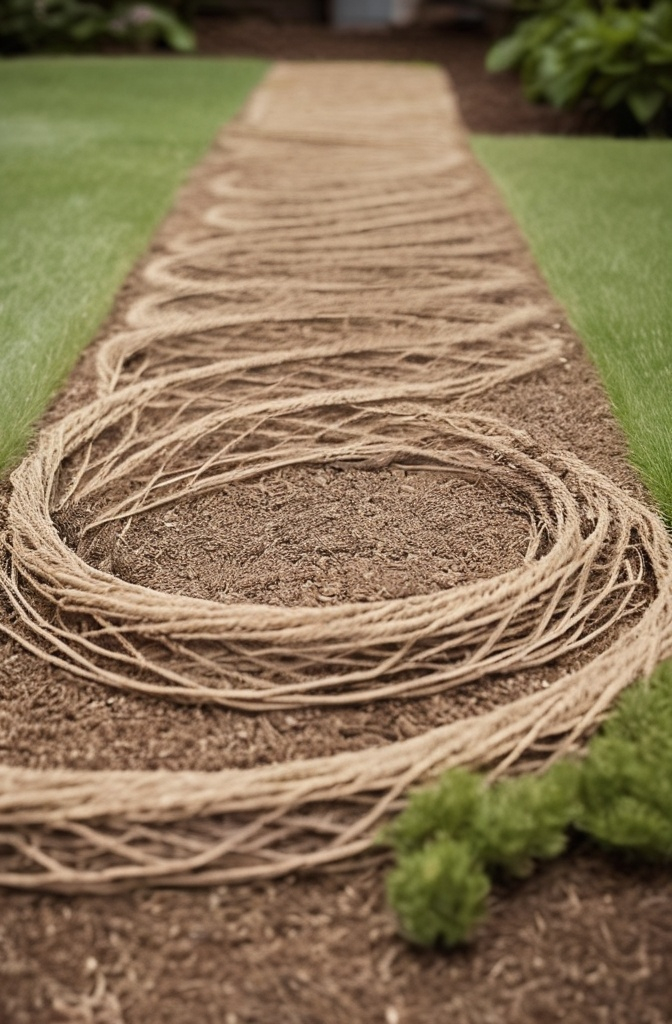
Jam rebar stakes into the ground every foot or so. Then weave rough jute twine between them. It’s surprisingly striking. Especially when the rebar starts to rust. Low-cost, high-style.
19. Basket Weave Border
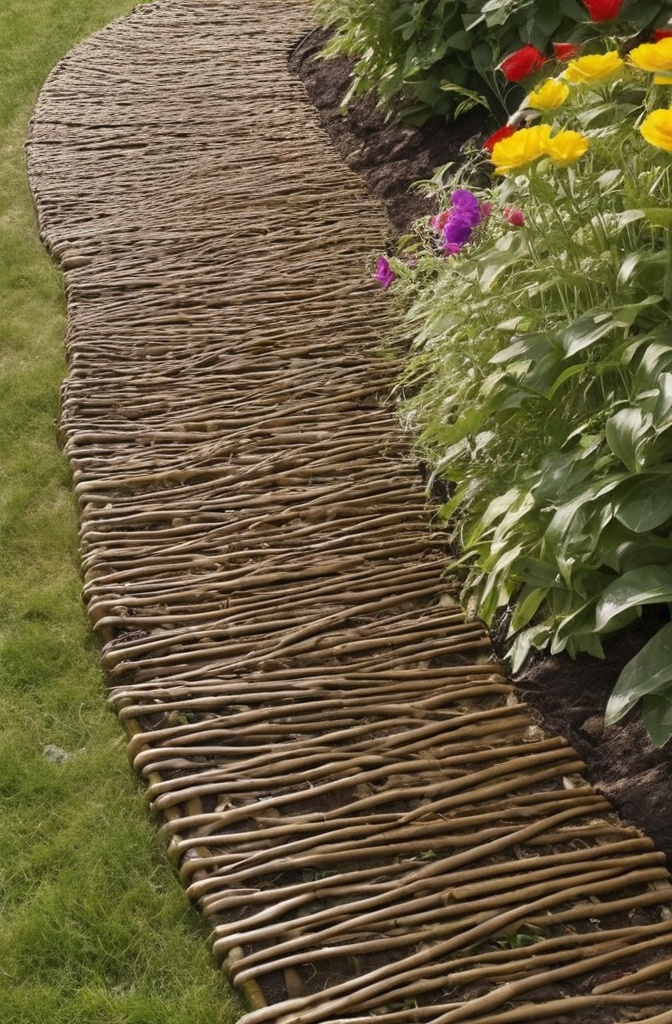
Use young willow branches, bendy and fresh, to weave a low fence. Old-world cottage charm meets garden chic. Keep it damp for a few days after weaving or it’ll crack.
20. Mosaic Madness
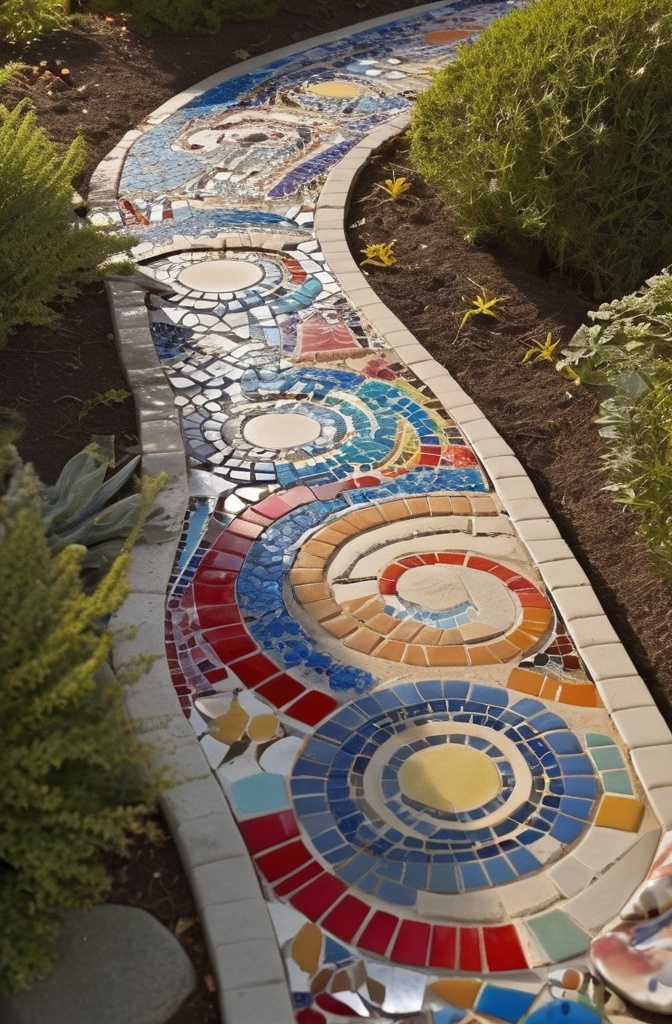
Take broken tiles, plates, marbles—whatever—and mortar them into a low border. Like a little Gaudí moment in your yard. The more colors, the better. Let it get weird.
Conclusion
Okay, let’s be real—garden edging doesn’t sound sexy. But it can be. It’s where your wild ideas meet the dirt. It’s where the polished meets the unruly. It’s where the garden stops saying “I’m a mess,” and starts saying “I meant to do this.”
But more than that, edging gives your plants room to shine. It says, “This is your space.” And sometimes, that’s all a tulip needs.
And yeah, you can totally hit up the hardware store and grab some plastic stuff. Nobody’s stopping you. But where’s the fun in that? You’ve got bricks. Bottles. Logs. Kids with paintbrushes. A couple dozen wine bottles if you’re lucky.
The edge isn’t just the end of something. It’s the beginning of the vibe. The little detail that says, “Hey. Someone gave a damn.”
Try one. Or try three. Rip out the plastic liner you’ve been staring at since 2004 and give your garden the facelift it deserves. Doesn’t have to be perfect. Just has to be yours.
And trust me—next time your neighbor walks by, they’ll stop. They’ll squint. And they’ll say, “Hey… what’d you do over there?”
Just smile and say, “I gave it an edge.”
FAQs
What is the purpose of garden edging?
Garden edging helps define spaces in your landscape. It separates flower beds from lawns or paths, keeping everything neat and in its place. Plus, it adds a strong visual design element that pulls your whole garden together.
What materials can I use for garden edging?
Honestly, almost anything. From traditional bricks and stones to quirky stuff like wine bottles, seashells, or painted rocks. You can go natural with logs and plants or industrial with steel and concrete. If it can form a line, it can probably be edging.
Is garden edging expensive?
Not at all—unless you want it to be. You can spend next to nothing by using recycled materials like broken tiles or logs. Or you can invest in higher-end stuff like corten steel or gabion walls. There’s an option for every budget.
Can I install edging myself?
Yep, most of it is super DIY-friendly. Some ideas like woven willow or steel might need a little more elbow grease, but most folks can knock out a good garden edge over a weekend. Just bring your gloves and maybe a cold drink.
Which garden edging is best for a modern look?
Go for sleek lines and solid materials. Corten steel, concrete, or gabion cages scream modern without even trying. Keep it minimal, clean, and maybe a little bit rusty—in a good way.
What about a cottage or rustic garden?
Try woven branches, terracotta pots, or even a rope and peg setup. Something that looks a little wonky, like nature helped build it. Imperfect is perfect in a cottage garden.
Will garden edging help with weeds?
Absolutely. A good edge acts like a little barrier, keeping lawn grass and weeds from creeping into your flower beds. It won’t stop everything, but it definitely helps cut down the chaos.
Can I make garden edging from recycled stuff?
Totally. Bottles, old roof tiles, scrap metal, broken dishes—it’s all fair game. Reclaimed materials not only save cash, they also give your garden serious personality.
Do I need special tools to install garden edging?
Not usually. A shovel, maybe a rubber mallet, a wheelbarrow if you’re dealing with heavy stuff. For metal or wood, you might want a saw or some bolts. But for most projects? Just basic garden gear will do.
What if I want something temporary?
Use lightweight options like rope, pots, or even painted rocks. These can be moved or swapped out whenever you want to change things up. Perfect if you’re a chronic re-arranger.
How high should garden edging be?
Depends on what you’re edging. A few inches is plenty for flower beds. For slopes or retaining soil, go taller. The goal is to keep things in place without stealing the spotlight.
Can edging improve curb appeal?
Big time. A tidy, well-edged garden looks thoughtful and cared for. It shows off your plants better, and it can seriously boost the first impression of your home.
Will edging affect drainage?
If installed right, it won’t cause problems. But if you’re using something solid and tall, make sure water can still move where it needs to go. Think about where that rain’s gonna run.
Is edging permanent?
It can be, but it doesn’t have to. Some ideas like rebar and twine, or bottle edges, can be pulled up and re-done. Others like concrete or buried stone might stick around longer. Choose what works for your vibe.
What’s the easiest edging idea for beginners?
Try brick-on-sand or just lay stones along your bed. No digging, no cement. It’s the garden equivalent of a “no makeup” makeup look—chill, easy, still looks good.
Which edging ideas are pet-friendly?
Stay away from sharp metal or glass, obv. Use smooth stones, logs, or living plant borders. Pets won’t even notice most of it—unless you used bones or bacon fat, then yeah, good luck.
How do I maintain garden edging?
Give it a check a couple times a year. Re-set anything that’s shifted, trim plants back if they’re spilling over too much. A little maintenance goes a long way to keeping the edge clean.
Can I mix different edging styles?
Sure! Who says you can’t have a log edge in the back and steel up front? Mix textures, colors, heights. Just keep the overall flow in mind so it doesn’t feel totally random (unless that’s what you’re going for).
What kind of edging is kid-friendly?
Painted rocks, log slices, or even bottle edges (if the glass is smooth) can be fun and safe for kids. Let them help build it—it becomes their little piece of the garden, and they’ll love it more.
Why does garden edging even matter?
Because it’s the little detail that holds the whole story together. It’s not just about keeping mulch from spilling or grass from creeping—it’s about finishing what you started. Making your garden feel like a place. Not just a patch of plants.

Emma is a passionate home decor enthusiast and the voice behind Home Evoke. With a keen eye for design and a love for transforming spaces, she shares her expertise and creative ideas to help others create beautiful, functional homes. Through her blog, Emma inspires readers with practical tips, trend insights, and DIY projects that make home styling effortless and enjoyable.

